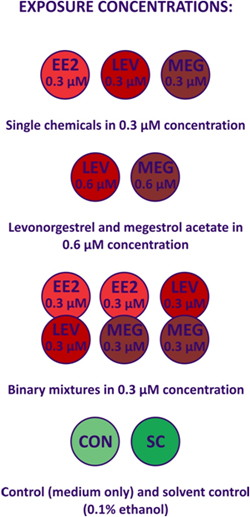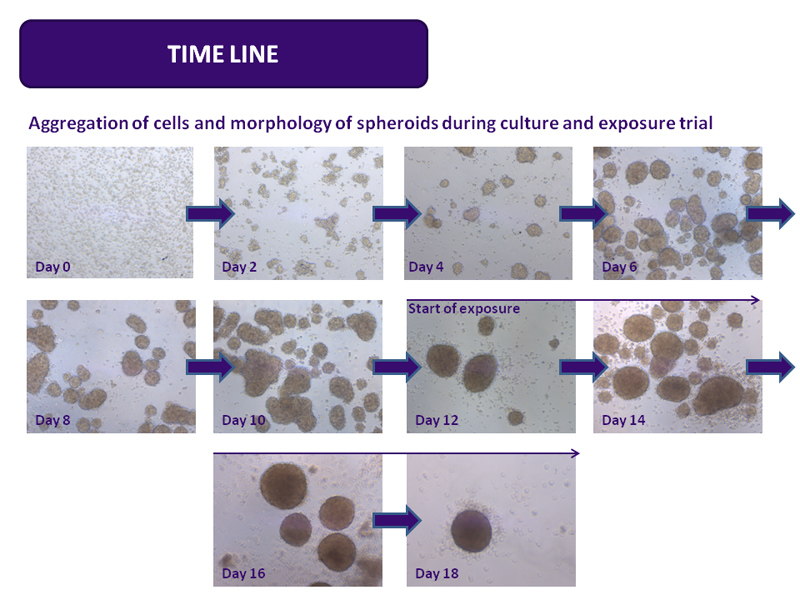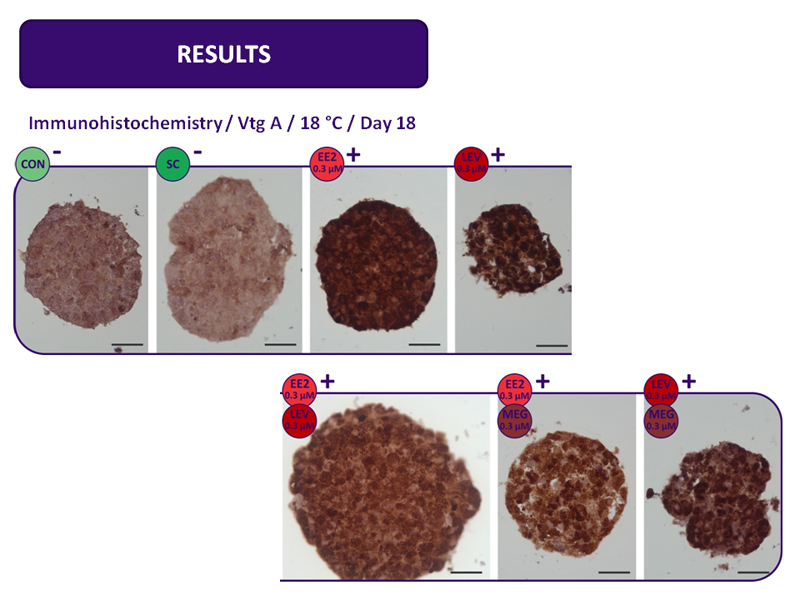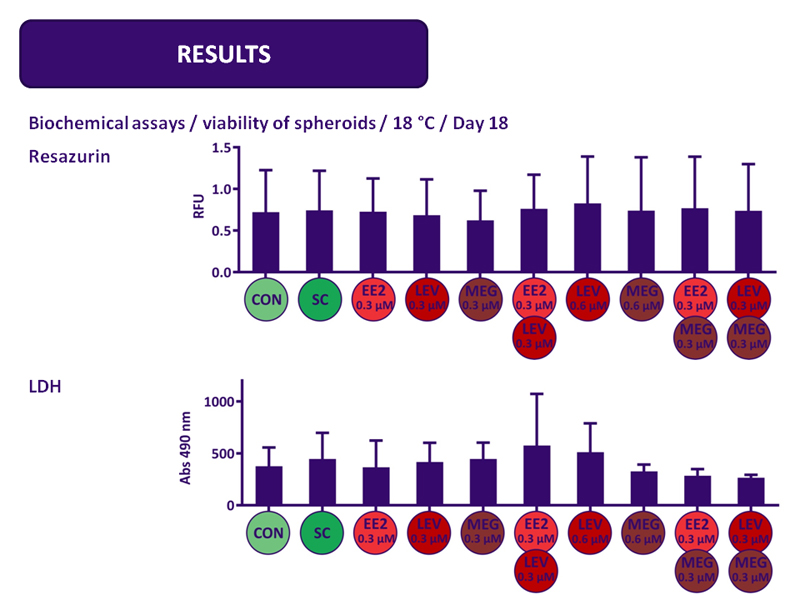Performed work

The spheroids were successfully cultured in the Laboratory for Histology and Embryology at ICBAS - School of Medicine and Biomedical Sciences, University of Porto. They need around 8 days to mature and become organized like cells in the liver. However, we chose to cultivate them for 12 days before exposing them to the aforementioned hormones for 6 days. Hormones were applied in either single concentrations (0.3 or 0.6 µM and in the binary mixtures of 0.3 µM), while we also had control and solvent control groups. At the end of the exposure period, spheroids were collected for several laboratory assays to check viability and effects of hormones: (1) gene expression assays; (2) biochemical analysis of viability; (3) light microscopy (morphology/immunohistochemistry); (4) Raman spectroscopy and (5) biometry. Results showed that in terms of metabolism (measured by two biochemical assays – LDH and resazurin), biometry (measuring of diameter, surface area and sphericity) and morphology of cells – there were no observable or statistically significant differences among groups. In other words, hormones did not cause changes to the viability and survival of spheroids/cells or their size. However, we demonstrated the difference between the two culture temperatures in terms of biochemical assays, meaning that global warming negatively impacted the metabolism of spheroids. Using a specific antibody (vitellogenin A) and gene expression assays, we also showed that hormones negatively impacted genes related to hepatic lipid metabolism, production of yolk and eggshell proteins, and expression of estrogen receptors in exposed spheroids.

Results
Using in-vitro methods, such are spheroids in the SPHEROTOX project, spared many lives of experimental animals. As described in the experimental setup, the exposure of spheroids to three hormones at two temperatures (eight combinations in total) allowed us to sacrifice only 8 brown trouts to achieve the research aim. If the same experimental design were conducted in vivo (using live animals), it would be necessary to sacrifice at least 300 fish. Therefore, our strategy allowed an enormous reduction in experimental animals (more than 97%). Annually, approximately 10.4 million experimental animals were used in the EU for various testing purposes, and 24.6% of that number accounted for fish (approx. 2.5 million fish), which means there is a way of reducing these huge numbers. The introduction of in vitro testing covering subacute and chronic toxicity has considerable ethical and economic benefits for society besides allowing new research opportunities and insights. Currently, traditional cell cultures are routinely run only in acute toxicity testing since they typically last 72 hours. Still, spheroids can survive, be exposed to much longer periods, and last for more than 30 days in the laboratory. This allows scientists to test the effects of various harmful chemicals, such as endocrine disruptors in the current project, for a longer period and assess their potential chronic toxicity. In this project, we showed that liver spheroids might react to hormones in similar ways as in vivo and that the methodology is robust since a large number of experimental groups is possible simultaneously, without the need for adding expensive equipment to already running cell culture laboratories.


